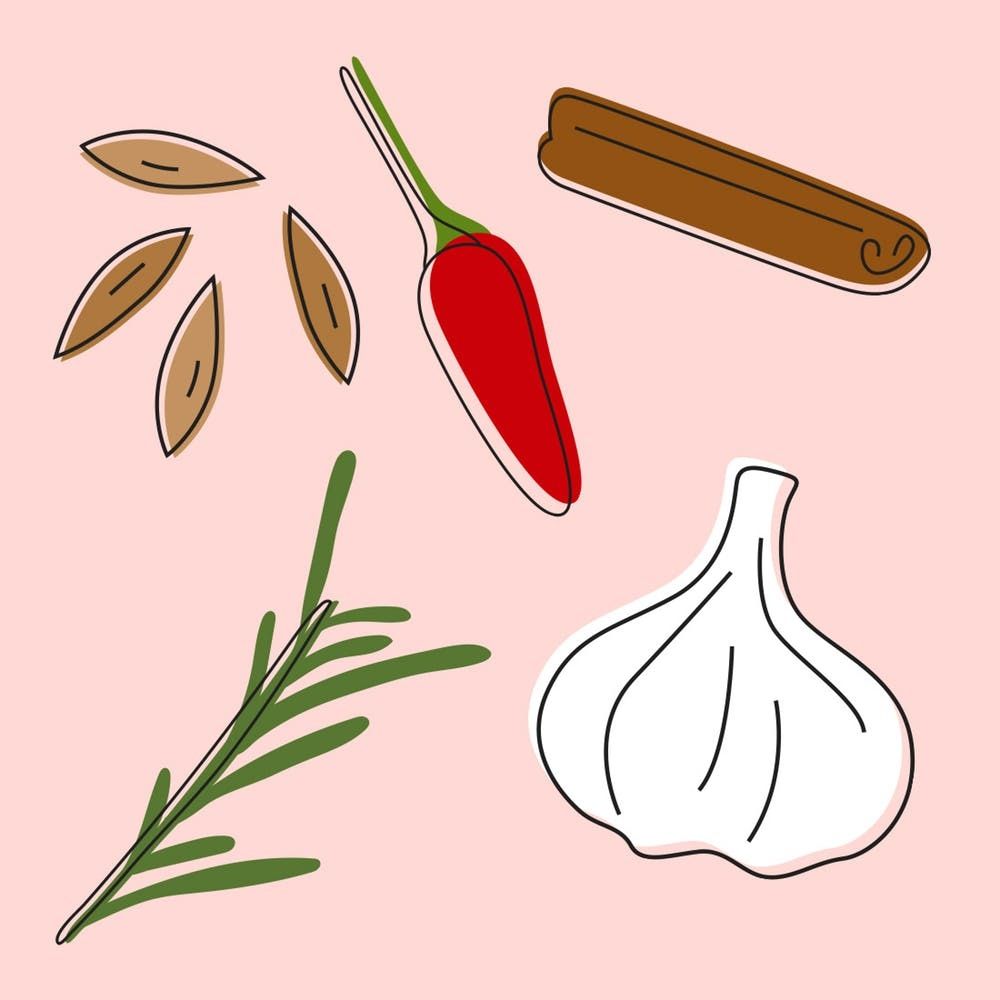When you first get into cooking, there’s a lot to learn. Sure, you’ll need to stock your pantry with staples, so you can start perfecting classic dishes like roasted chicken and homemade bread. But the easiest way to start making better meals is to get familiar with your spice cabinet. Just a pinch of this or that can transform a totally bland meal into something spectacular. Find out exactly how to get started with this simple guide on using cinnamon, cayenne, garlic powder, and more.
Cinnamon
This fragrant spice has been used for thousands of years and actually comes from the inner bark of a type of evergreen tree. You can use cinnamon in breakfast food, like morning buns and oatmeal, to impart a warming flavor. Because it has a slightly sweet flavor, just a sprinkle can help offset bitterness in coffee and espresso drinks. It’s also widely used in savory dishes around the world, like Moroccan tagines, couscous, and roasted meats.
Cayenne Pepper
Cayenne pepper is pretty spicy, so just a pinch goes a long way. You can add it to soups and stews for a bit of heat, when you don’t want to add fresh chilies. Add some to the breading mixture for fried chicken or fish to help cut through the heaviness of the dish. You can even add just a bit to rich chocolate desserts — the play of spicy and sweet is unforgettable.
Garlic Powder
Garlic powder, made from dried, ground garlic, is a real workhorse. You can add it to salad dressings and dips where the pungent flavor of raw garlic would be too strong, use as a rub for grilled meats (fresh garlic burns too easily to use in high-heat applications), and make garlic bread the easy way, no tedious peeling of cloves required.
Thyme
Thyme has a woodsy, herbal flavor that brings a special something to any dish. It’s a classic pairing for chicken, pork, and beef roasts. You can go sweet with it, infusing in a simple syrup that can be added to cocktails (like a gin and tonic) to add a delicate herbal flavor, and it can be used to bring a new dimension to baked goods like flatbreads, crackers, and rolls.
Oregano
Pungent oregano is an essential ingredient in many Latin American and Mediterranean dishes. It pairs well with chicken, either in a marinade or spice rub. Add it to a sautée of shrimp or other white fish, along with garlic, lemon juice, and olive oil for a Greek-inspired meal. It also helps bring a woodsy depth of flavor to tomato-based sauces and soups.
Chili Powder
American chili powder isn’t just made from crushed chilies — it usually has other spices, like cumin, garlic powder, and oregano, added too. Sprinkle on roasted vegetables to deepen their flavor, or add it to homemade barbecue sauce and marinades to impart lots of flavor with just one spice. It’s also tasty in soups and stews, adding a smokey, spicy layer that’ll make it seem like your meal has been simmering for much longer than it actually has.
Curry Powder
The curry powder you find at the grocery store is actually a spice blend, the contents of which vary from brand to brand but usually consist of a combination of spices like cumin, coriander, turmeric, fenugreek, and chili pepper. You can use it to make your favorite Indian stews, add it to marinades for grilled meats (try mixing it with yogurt, lemon, and garlic), and sprinkle into stir-fried noodles and noodle soups for an irresistible meal.
Cumin
The flavor of cumin is hard to describe, but its powdered version is surprisingly versatile. It’s a main ingredient in homemade taco seasoning, so you can make your own and ditch the stuff that comes in a packet. It enhances the savory, smokey flavor of grilled meats, and it’s great in curries, chilies, and hearty stews.
Nutmeg
For the best flavor, buy whole nutmeg and grate it yourself. Then, sprinkle it in your coffee and lattes to add a layer of warming spice, or add a dash to heavy béchamel or other white sauces to add complexity. It’s also good in pretty much any baked good that also calls for cinnamon, but use sparingly — it has a strong flavor.
Rosemary
Fragrant rosemary adds an almost piney flavor to your meals. Use in marinades for meat, poultry, and seafood, or whisk it into your salad dressings. It’s also surprisingly delicious in shortbread cookies, and helps bring a freshness to crackers and biscuits.
For more cooking how-tos, follow us on Pinterest.
